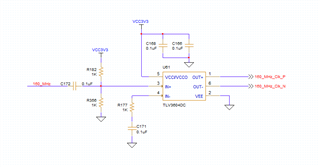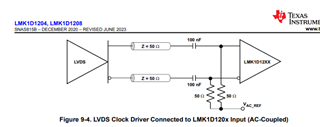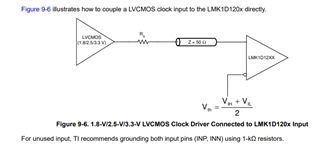Other Parts Discussed in Thread: LMX1205, LMK1C1102
Tool/software:
Hi
I am using LMK1D1204RGTR in one of the project, but it doesn't accept Analog signal or RF signal as input.
Can you suggest other alternate part which accepts both Analog and RF signal as input (single end).
Regards




